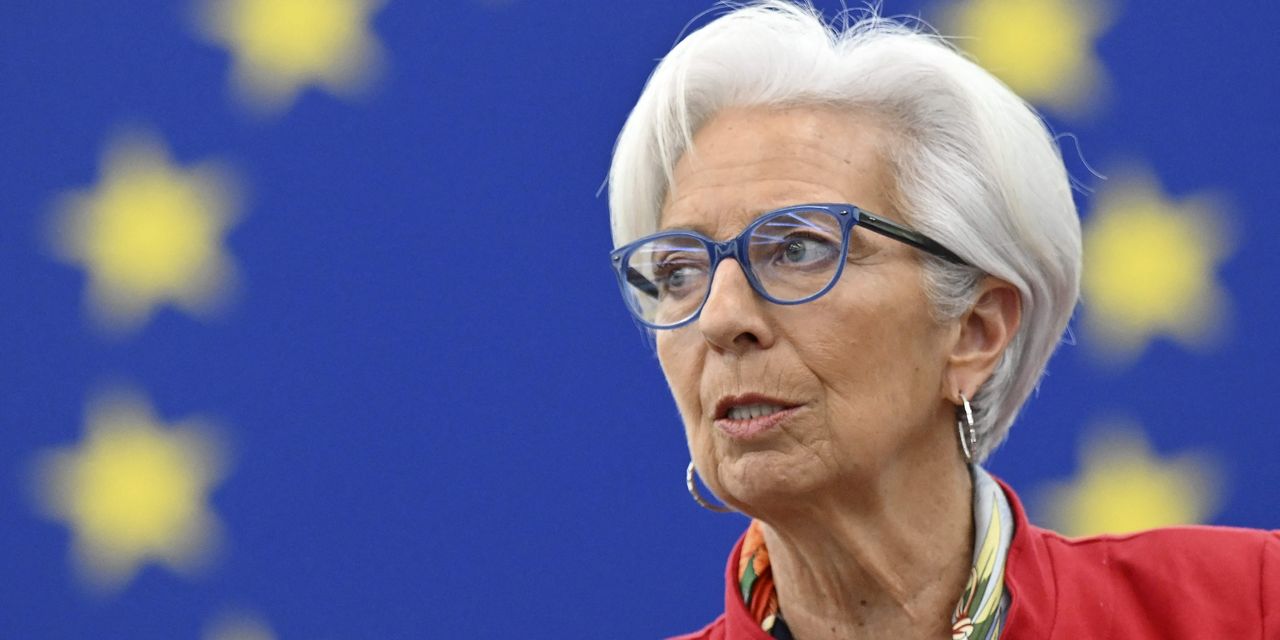The European Central Bank on Thursday lifted interest rates by 25 basis points, slowing the pace of tightening as it delivered a seventh straight increase, indicating it’s not ready to press the pause button.
“We are not pausing,” ECB President Christine Lagarde told reporters at a news conference, adding that the stance was “very clear.”
The increase lifted the ECB’s main rate to 3.25%, near a 15-year high.
“The inflation outlook continues to be too high for too long,” the ECB Governing Council said in a statement at the conclusion of its policy meeting.
“Headline inflation has declined over recent months, but underlying price pressures remain strong. At the same time, the past rate increases are being transmitted forcefully to euro area financing and monetary conditions, while the lags and strength of transmission to the real economy remain uncertain,” the ECB said.
Lagarde told reporters that the lending survey informed the decision to lift rates by a quarter point rather than a half point. She said there was a strong consensus behind the quarter-point move, while acknowledging some policy makers had preferred a half-point hike.
The euro
EURUSD,
initially slumped after the statement, but rebounded sharply to trim a loss versus the U.S. dollar after Lagarde said the ECB wasn’t prepared to pause the rate-hiking cycle. The euro was down 0.2% at $1.1035 after trading as low as $1.1003. The euro has rallied 3% versus the dollar so far in 2023.
European government bond yields were also lifted after Lagarde ruled out a pause. The yield on the 10-year German government bond
TMBMKDE-10Y,
or bund, was up around a half of a basis point at 2.289%.
The ECB move comes after the Federal Reserve on Wednesday delivered a 10th consecutive rate increase, but signaled that it was prepared to hold off on further tightening depending on incoming economic and financial data. Asked if the ECB could continue on a tightening path if the U.S. central bank paused, Lagarde dismissed the notion that ECB decisions were “dependent” on the Fed.
Market participants, meanwhile, have priced in three Fed rate cuts by year-end. The ECB, in contrast, was expected to deliver further monetary tightening.
Inflation in the eurozone continued to run at a 7% year-over-year clip in April, roughly in line with market expectations, but a modest acceleration from March. Core inflation, excluding food, energy, alcohol and tobacco, ticked down a tenth to 5.6% from 5.7%.
A slowing eurozone economy, however, has bolstered arguments for bringing the monetary tightening cycle to an end, economists said. The ECB’s bank lending survey released Tuesday showed a tightening in conditions, with the largest tightening in credit standards for the last two quarters since the sovereign debt crisis.
The ECB in March shrugged off worries about the banking sector, delivering a half-point rate hike but signaling that future decisions would be made on a meeting-by-meeting basis, abandoning a longstanding policy of “forward guidance” aimed at massaging market expectations around future rate moves.
Read the full article here




